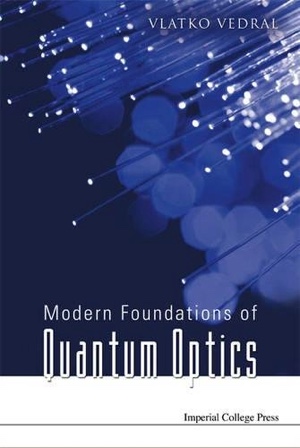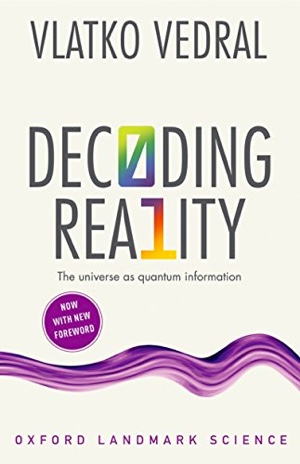Do we really need a theory of everything?
Finding a theory of everything – explaining all the forces and particles in the universe – is arguably the holy grail of physics. While each of its main theories works extraordinarily well, they clash also with each other – leaving physicists to search for a deeper, more fundamental theory.
But do we really need a theory of everything? And are we anywhere near achieving one? That’s what I discussed in the sixth and final episode of the Great Mysteries of Physics podcast – hosted by Miriam Frankel, science editor at The Conversation, and supported by FQxI, the Foundational Questions Institute.
LISTEN IN FULL HERE
Our two best theories of nature are quantum mechanics and general relativity, describing the smallest and biggest scales of the universe, respectively. Each is tremendously successful and has been experimentally tested over and over. The trouble is, they are incompatible with one another in many ways – including mathematically.
“General relativity is all about geometry. It’s how space is curved and how space-time – this unified entity that contains three dimensions of space and one dimension of time – is itself also curved,” explains Vlatko Vedral, a professor of physics at Oxford University in the UK. “Quantum physics is actually all about algebra.”
Physicists have already managed to unite quantum theory with Einstein’s other big theory: special relativity (explaining how speed affects mass, time and space). Together, these form a framework called “quantum field theory”, which is the basis for the Standard Model of Particle Physics – our best framework for describing the most basic building blocks of the universe.
The standard model describes three out of the four fundamental forces in the universe – electromagnetism, and the “strong” and “weak” forces which govern the atomic nucleus – excluding gravity.
While the standard model explains most of what we see in particle physics experiments, there are a few gaps. To bridge these, an extension called “supersymmetry”, suggesting particles are connected through a deep relationship, has been proposed. Supersymmetry suggests each particle has a “super partner” with the same mass, but opposite spin. Unfortunately, particle accelerators such as the Large Hadron Collider (LHC) at Cern in Switzerland have failed to find evidence of supersymmetry – despite being explicitly designed to do so.
On the other hand, there are recent hints from both LHC and Fermilab in the US suggesting that there may be a fifth force of nature. If these results could be replicated and confirmed as actual discoveries, that would have implications for uniting quantum mechanics and gravity.
“I think [the discovery of a new force] would be amazing,” says Vedral. “It would challenge this thing that that has now existed for well over half a century that there are four fundamental forces”.
Vedral argues the first thing to do if we discovered a fifth force would be to establish whether it can be described by quantum mechanics.
If it could, it would indicate that quantum theory might ultimately be more fundamental than general relativity, accounting for four out of five forces – suggesting general relativity ultimately may need to be modified. If it couldn’t, that would shake up physics – suggesting we may need to modify quantum mechanics, too.
What about other mysterious properties?
But what should a theory of everything include? Would it be enough to unite gravity and quantum mechanics? And what about other mysterious properties such as dark energy, which causes the universe to expand at an accelerated rate, or dark matter, an invisible substance making up most of the matter in the universe?
As Chanda Prescod-Weinstein, an assistant professor in physics and astronomy at the University of New Hampshire in the US, explains, physicists prefer to use the term “theory of quantum gravity” over “theory of everything”.
“Dark matter and dark energy are most of the matter energy content in the universe. So it’s not really a theory of everything if it’s not accounting for most of the matter energy content in the universe,” she argues. “This is why I’m glad we don’t actually use ‘theory of everything’ in our work.”
Although they might not explain everything, several proposed theories of quantum gravity exist. One is string theory, which suggests the universe is ultimately made up of tiny, vibrating strings. Another is loop quantum gravity, which suggests Einstein’s space-time arises from quantum effects.
“One of the strengths that people will point to with string theory is that string theory built on quantum field theory,” explains Prescod-Weinstein. “It brings the whole standard model with it, which loop quantum gravity doesn’t do in the same way.” But string theory also has its weaknesses, she argues, such as requiring extra dimensions that we’ve never seen any evidence of.
The theories are difficult to test experimentally – requiring much more energy than we can produce in any laboratory. Vedral argues that while we ultimately can’t directly probe the tiny scales needed to find evidence for theories of quantum gravity, it may be possible to amplify such effects so that we could indirectly observe them on larger scales with table-top experiments.
LISTEN IN FULL HERE
Sign up to my substack
BOOKS
ASK ME ANYTHING!
If you'd like to ask me a question or discuss my research then please get in touch.





